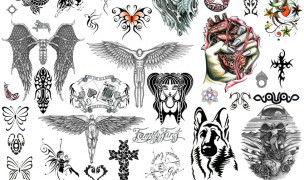 11 Terms
11 TermsHome > Terms > English, UK (UE) > Light emitting diodes (LED)
Light emitting diodes (LED)
Work on a completely different concept. Traditionally LEDs are created from two semiconductors. By running current in one direction across the semiconductor the LED emits light of a particular frequency (hence a particular color) depending on the physical characteristics of the semiconductor used. The semiconductor is covered with a piece of plastic that focuses the light and increases the brightness. These semiconductors are very durable, there is no filament, they donìt require much power, theyìre brighter and they last a long time. By densely packing red, blue and green LEDs next to each other on a substrate one can create a display. The disadvantage of LEDs is that they are much larger ñ therefore the resolution is not nearly as good as LCD displays. Thatìs why most LED displays are large, outdoor displays, not smaller devices, like monitors. OLED or Organic LED is not made of semiconductors. Itìs made from carbon-based molecules. That is the key science factor that leads to potentially eliminating LEDsì biggest drawback ñ size. The carbon-based molecules are much smaller. And according to a paper written by Dr. Uwe Hoffmann, Dr. Jutta Trube and Andreas Kl–ppel, entitled OLED - A bright new idea for flat panel displays ìOLED is brighter, thinner, lighter, and faster than the normal liquid crystal (LCD) display in use today. They also need less power to run, offer higher contrast, look just as bright from all viewing angles and are - potentially - a lot cheaper to produce than LCD screens.î LCD, LED, and OLED definitions courtesy The San Francisco Consulting Group (SFCG)
- Part of Speech: noun
- Synonym(s):
- Blossary:
- Industry/Domain: Physics
- Category: Nanotechnology
- Company:
- Product:
- Acronym-Abbreviation:
Other Languages:
Member comments
Terms in the News
Featured Terms
phylum placozoa
Macroscopic, flattened marine animals, composed of ventral and dorsal epithelial layers enclosing ...
phylum cnidaria
Cnidarians. Hydras, hydroids, jellyfish, sea anemones, and corals. Free-swimming or sessile, with ...
share a term with millions
Share a term with millions of users around the world and increase your online visibility.Share a ...
oak
Genus native to the Northern Hemisphere with spirally arranged leaves, catkins for flowers and ...
Everest
The last but not least mount Everest. The Earth's highest mountain, with a peak at 8,848 metres ...
aglaonema
Genus of about 20 species of usually rhizomatous, evergreen perennials from tropical forest in Asia. ...
Robojelly
Robojelly is a hydrogen-powered robot desgined in the United States that moves through the water ...
Ferdinand Porsche
Ferdinand Porsche (3 September 1875 – 30 January 1951) was an Austrian-German automotive engineer ...
Marzieh Afkham
Marzieh Afkham, who is the country’s first foreign ministry spokeswoman, will head a mission in east ...
define1
Share a term with millions of users around the world and increase your online visibility.Share a ...
Contributor
Featured blossaries
Browers Terms By Category
- Cultural anthropology(1621)
- Physical anthropology(599)
- Mythology(231)
- Applied anthropology(11)
- Archaeology(6)
- Ethnology(2)
Anthropology(2472) Terms
- Lumber(635)
- Concrete(329)
- Stone(231)
- Wood flooring(155)
- Tiles(153)
- Bricks(40)
Building materials(1584) Terms
- General law(5868)
- Courts(823)
- Patent & trademark(449)
- DNA forensics(434)
- Family law(220)
- Legal aid (criminal)(82)
Legal services(8095) Terms
- Legal documentation(5)
- Technical publications(1)
- Marketing documentation(1)
Documentation(7) Terms
- Manufactured fibers(1805)
- Fabric(212)
- Sewing(201)
- Fibers & stitching(53)






